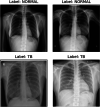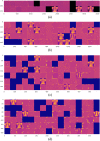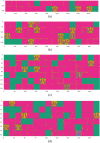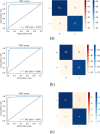Explainable deep-neural-network supported scheme for tuberculosis detection from chest radiographs
- PMID: 38317098
- PMCID: PMC10840197
- DOI: 10.1186/s12880-024-01202-x
Explainable deep-neural-network supported scheme for tuberculosis detection from chest radiographs
Abstract
Chest radiographs are examined in typical clinical settings by competent physicians for tuberculosis diagnosis. However, this procedure is time consuming and subjective. Due to the growing usage of machine learning techniques in applied sciences, researchers have begun applying comparable concepts to medical diagnostics, such as tuberculosis screening. In the period of extremely deep neural nets which comprised of hundreds of convolution layers for feature extraction, we create a shallow-CNN for screening of TB condition from Chest X-rays so that the model is able to offer appropriate interpretation for right diagnosis. The suggested model consists of four convolution-maxpooling layers with various hyperparameters that were optimized for optimal performance using a Bayesian optimization technique. The model was reported with a peak classification accuracy, F1-score, sensitivity and specificity of 0.95. In addition, the receiver operating characteristic (ROC) curve for the proposed shallow-CNN showed a peak area under the curve value of 0.976. Moreover, we have employed class activation maps (CAM) and Local Interpretable Model-agnostic Explanations (LIME), explainer systems for assessing the transparency and explainability of the model in comparison to a state-of-the-art pre-trained neural net such as the DenseNet.
Keywords: Class activation maps; Convolution neural network; Deep neural network; Explainable models; LIME explainer; Pre-trained model; Tuberculosis diagnosis.
© 2024. The Author(s).
Conflict of interest statement
All authors declare that they have no conflicts of interest.
Figures











Similar articles
-
Development and Validation of a Convolutional Neural Network Model to Predict a Pathologic Fracture in the Proximal Femur Using Abdomen and Pelvis CT Images of Patients With Advanced Cancer.Clin Orthop Relat Res. 2023 Nov 1;481(11):2247-2256. doi: 10.1097/CORR.0000000000002771. Epub 2023 Aug 23. Clin Orthop Relat Res. 2023. PMID: 37615504 Free PMC article.
-
Comparison of Two Modern Survival Prediction Tools, SORG-MLA and METSSS, in Patients With Symptomatic Long-bone Metastases Who Underwent Local Treatment With Surgery Followed by Radiotherapy and With Radiotherapy Alone.Clin Orthop Relat Res. 2024 Dec 1;482(12):2193-2208. doi: 10.1097/CORR.0000000000003185. Epub 2024 Jul 23. Clin Orthop Relat Res. 2024. PMID: 39051924
-
Multiclass skin lesion classification and localziation from dermoscopic images using a novel network-level fused deep architecture and explainable artificial intelligence.BMC Med Inform Decis Mak. 2025 Jul 1;25(1):215. doi: 10.1186/s12911-025-03051-2. BMC Med Inform Decis Mak. 2025. PMID: 40597254 Free PMC article.
-
Symptom- and chest-radiography screening for active pulmonary tuberculosis in HIV-negative adults and adults with unknown HIV status.Cochrane Database Syst Rev. 2022 Mar 23;3(3):CD010890. doi: 10.1002/14651858.CD010890.pub2. Cochrane Database Syst Rev. 2022. PMID: 35320584 Free PMC article.
-
Signs and symptoms to determine if a patient presenting in primary care or hospital outpatient settings has COVID-19.Cochrane Database Syst Rev. 2022 May 20;5(5):CD013665. doi: 10.1002/14651858.CD013665.pub3. Cochrane Database Syst Rev. 2022. PMID: 35593186 Free PMC article.
Cited by
-
A Robust Tuberculosis Diagnosis Using Chest X-Rays Based on a Hybrid Vision Transformer and Principal Component Analysis.Diagnostics (Basel). 2024 Dec 5;14(23):2736. doi: 10.3390/diagnostics14232736. Diagnostics (Basel). 2024. PMID: 39682642 Free PMC article.
References
-
- Tuberculosis. Who.int.
-
- CDCTB. Tuberculosis. Centers for Disease Control and Prevention. 2022.
-
- Ueda D, Yamamoto A, Shimazaki A, Walston SL, Matsumoto T, Izumi N, et al. Artificial intelligence-supported lung cancer detection by multi-institutional readers with multi-vendor chest radiographs: a retrospective clinical validation study. BMC Cancer. 2021;21:1120. doi: 10.1186/s12885-021-08847-9. - DOI - PMC - PubMed
Publication types
MeSH terms
Grants and funding
LinkOut - more resources
Full Text Sources
Medical
Research Materials

